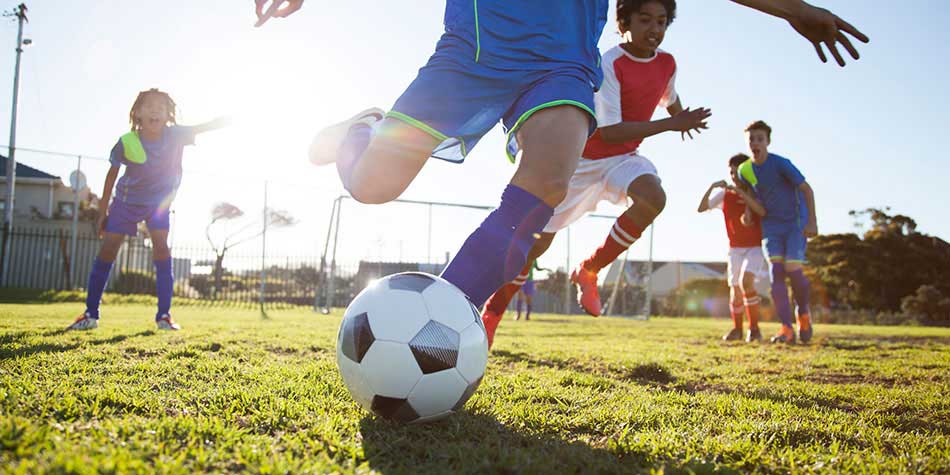
Sports are a key component of a healthy childhood for many kids. The physical, social and emotional benefits are well documented. And yet, each year more than 1 million children and teens visit emergency rooms for sports and recreation injuries, according to Safe Kids Worldwide.
Common youth sports injuries include ankle sprains, concussions, and overuse ailments such as knee pain and Little League Elbow. It’s not possible to eliminate injuries. But with knowledge, preparation and healthy strategies, it’s possible to reduce the rate of injuries. Read on for tips parents and coaches can use to keep kids safer.
Tips for parents
- Be prepared. Whether or not your child’s school or sports organization asks for one, be sure your child has a complete pre-participation physical exam. This will help rule out any underlying medical conditions that could cause trouble when your child is active.
- Communicate. Before the first practice, be sure you’ve told your child’s coach about any history of asthma or other medical conditions.
- Get the gear. You don't need to buy the most expensive or name-brand equipment, but make sure your child or team has the necessary safety gear. And send your athlete to practices and games with appropriate clothing and a full water bottle. Depending on the sport, that might include mouth guard, shin guards, ankle braces, rubber cleats, and—don't forget, even on cloudy days!—sunscreen.
- Be available. While you can't be at every practice or game, you can make sure that a coach or other adult has your contact information in case of an emergency. Remember to keep your phone nearby during those times.
Tips for coaches
- Establish good policies. Before the season starts, communicate safety guidelines to your athletes and their families. These can include having proper warm-ups before games and practices, including hydration breaks, and encouraging athletes to sit out if injured or not feeling well.
- Be first-aid ready. It's a great idea to get certified in first-aid and CPR. Also, keep a stocked first-aid kit at all team events.
- Be concussion savvy. Get the proper training so you know the signs and symptoms of concussions. After any head injury or suspected concussion, an athlete must sit out until concussion is ruled out.
- Plan for rest. Make sure your weekly practice and game schedule includes at least one to two days of rest.
$webqFacilityNumber
Need a Physician?